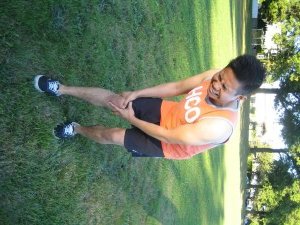An individual who experiences chronic knee pain could no longer participate in sports or any physical activity as well as daily tasks such as climbing stairs. There are various injuries to the knee that can lead to right knee pain including a tear on the medial meniscus. Those who engage in high-impact sports or activities or jobs that involve repetitive use of the knee should fully understand what this condition is all about and the measures to prevent and manage the condition.
It is important to note that the knee is a complex joint that enables various movements. The knee joint is comprised of ligaments, bones, cartilage and muscles. The menisci are pieces of cartilage that function as shock absorbers and help stabilize the joint. Take note that there are two menisci present in the knee – the lateral on the exterior of the joint and medial on the interior of the joint. A medial meniscus tear can be a partial or full tear and tends to occur abruptly. The meniscus which is C-shaped can end up torn in pieces or right in the middle.
What are the symptoms?
In most of the cases of medial meniscus tear, they are usually acute and occur when the knee is forced to twist or bend while the leg is bearing weight. Nevertheless, in some cases, it can be caused by normal wear and tear as well as degeneration that occur as one starts to age.

In acute medial meniscus tears, the initial symptom is pain in the right knee. There is a popping sensation or sound at the time the injury was sustained. The right knee will become swollen, difficult to move and appears unstable with locking or catching movements. When it comes to degenerative tears, there are no symptoms at all. In some cases, the right knee will occasionally swell, lock or catch with certain movements. Take note that these symptoms can be constant or simply occur occasionally.
How a medial meniscus tear is diagnosed
When it comes to a medial meniscus tear, the doctor will conduct a physical exam. The right leg will be moved in various directions and palpated to check for indicative signs such as pain and clicking sounds in the interior part of the knee while the leg is turned outwards or inwards. Additional tests such as MRI, X-ray, blood tests and fluid aspiration to help check for the common indicators and rule out other possible causes of the symptoms.
Treatment
The treatment for a medial meniscus tear depends on the location of the tear. Since the exterior part of the meniscus is provided with a good blood supply, conservative measures are initially used such as rest and avoiding activities that worsen the symptoms. Encouraging the individual to rest is an initial first aid measure to promote the healing process. If you will enroll in a first aid course, you will learn the basics on the RICE method.
The application of ice and elevation will help minimize the swelling. As for severe symptoms, medications are given to help control the pain and inflammation along with wrapping the area. The healing usually takes weeks or months depending on the severity of the tear. In case the tear occurs on the interior part of the meniscus, surgery might be required to eliminate the damaged part since it has poor blood supply that will prevent it from healing properly. In any scenario, most individuals can eventually resume their daily activities.
